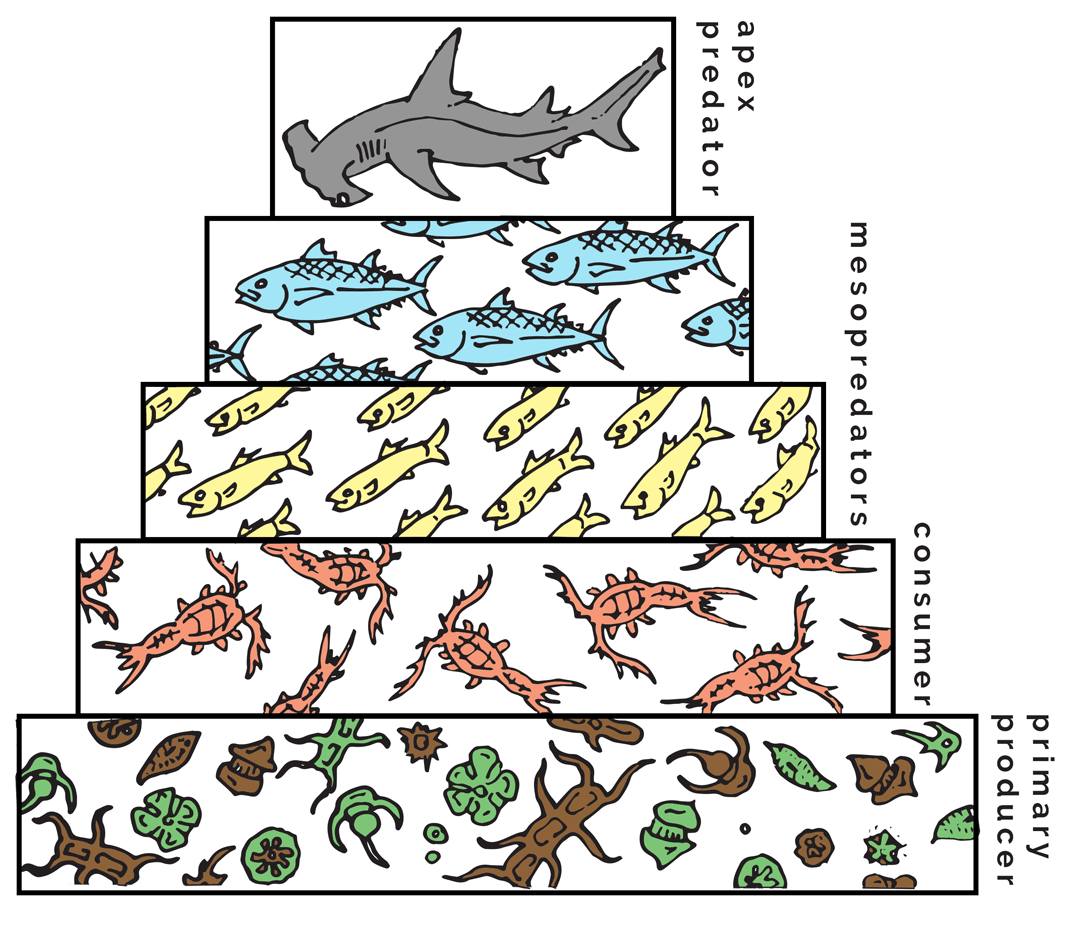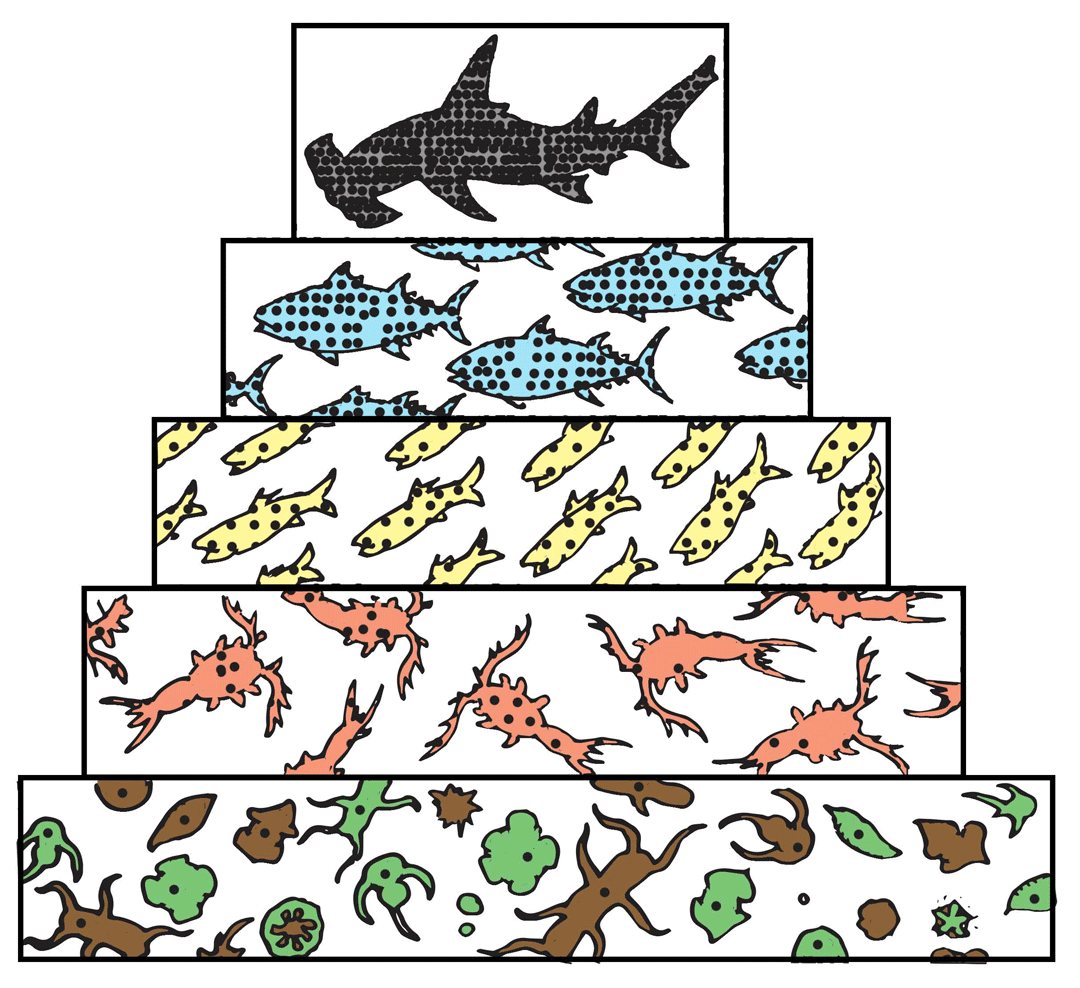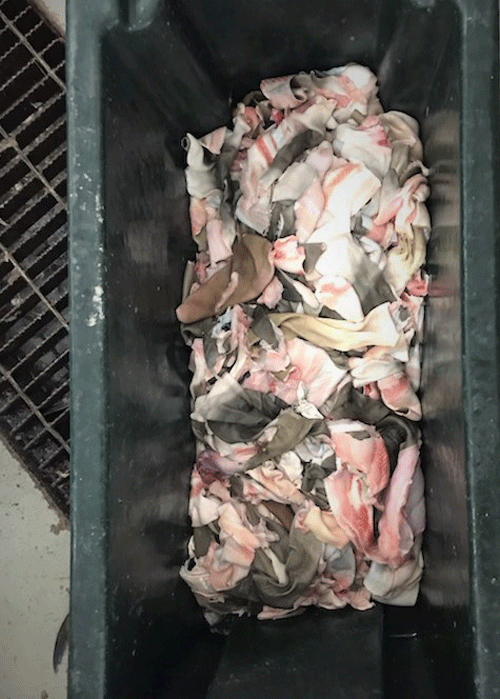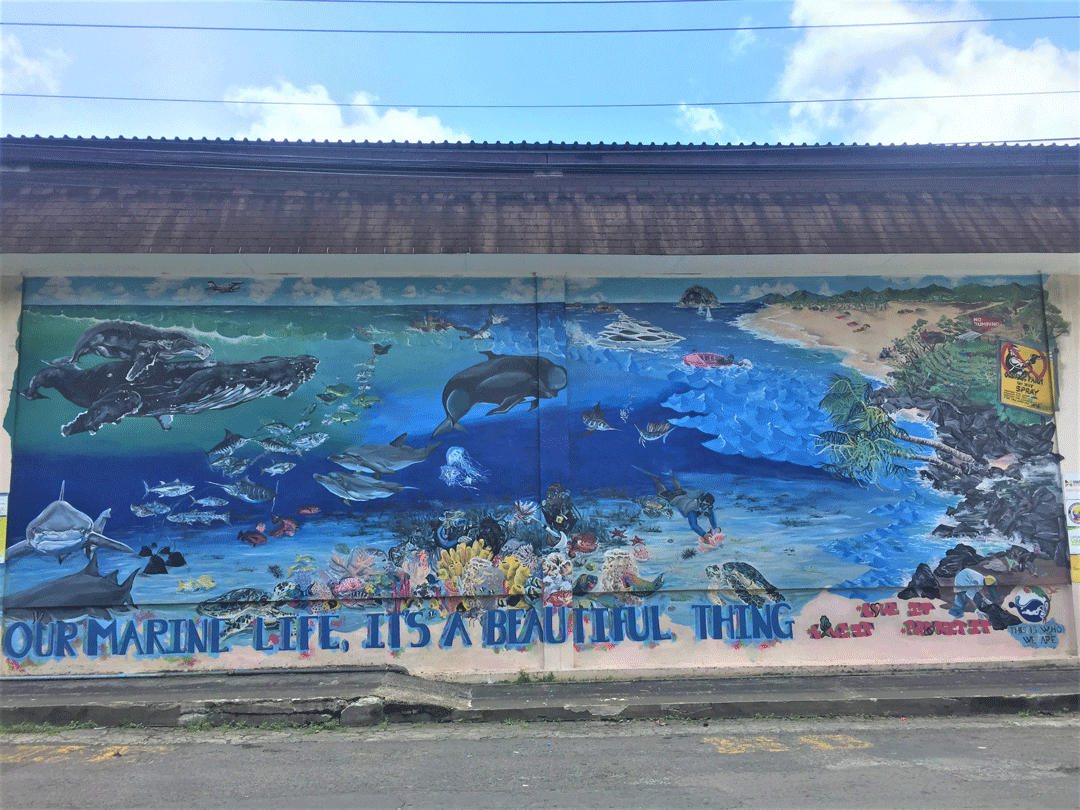Seafood, Mercury, and Bioaccumulation
Readers have probably heard that there are limits on how much tuna you should eat because of the risks posed by mercury contamination. The same patterns of chemical pollution and biomagnification that make tuna potentially dangerous to human health also apply to many shark species, which means that shark isn’t necessarily a healthy choice for people to eat frequently. Although tuna is more commonly eaten than shark in the United States, consumption of shark meat is on the rise around the globe. In St. Vincent, seafood makes up a significant portion of local diet, so questions about the health risks of consuming shark (and other seafood) are particularly important. Understanding how these pollutants end up in the environment and how they concentrate up the food chain can help us recognize public health risks and consider potential policy responses.

The Eltonian pyramid (named after Charles Sutherland Elton, one of the founders of ecological science) shows the trophic levels moving up from a base of primary producers (like the algae shown here) all the way up to apex predators like hammerhead sharks. Image © Christian Pankow | Field School
Pollutants
Many pollutants are “anthropogenic,” meaning they are introduced into the environment by humans. Mercury, the primary pollutant we are studying in shark meat, is often released by coal-fired power plants, waste incinerators, and other industrial processes. Mercury can also be introduced into the marine environment naturally, for instance through volcanic eruptions and rock weathering (and remember—although La Soufrière hasn’t erupted since 1979, Saint Vincent is emphatically a volcanic island). After being introduced into marine environments in an inorganic form, mercury is often transformed (“methylated”) by microorganisms into organic methylmercury, the form most likely to be dangerous to living organisms, including humans.
Studies of dolphins and porpoises off the coast of Saint Vincent have found that they have high levels of mercury in their tissues, and so has research on shark species in Trinidad and Tobago, where shark is a popular food. While we don’t know the exact pathways for the introduction of this mercury into marine environments of the Southern Caribbean, we do know a fair amount about how it winds up in the tissues of species we eat and/or care about.

Here we can see how mercury (represented as black dots) can build up in the tissues of higher trophic level species like mesopredators and apex predators. This contamination can lead to effects on the health of these animals and on humans who consume them. Image © Christian Pankow | Field School
Trophic levels and marine food webs
To understand more about that, we first need to take a short detour into the world of ecology. Ecologists use the term “trophic level” to talk about the position of an organism’s feeding relative to other organisms. A very high trophic level species is likely to be an “apex predator” at the top of the food chain. A very low trophic level species is more likely to be what’s called a “primary producer” (often a photosynthesizing plant) or a “consumer” (usually herbivores that eat those plants). Animals that are predators but which are also eaten by larger predators fall in the middle of the pyramid and are called “mesopredators”. Approximately 10% of energy at each trophic level transfers up to the next level (e.g., 10 pounds of plant biomass supports about one pound of herbivore biomass). This is why the number of individual predators and the total biomass of predator species needs to be much lower than the number of plants and their total biomass—the base of the pyramid needs to be large enough to support the top of the pyramid, losing 90% of energy at each step.

Fried shark is a relatively commonly meal served at local restaurants, especially in the Grenadines, but may pose health risks to those who eat it regularly. Photo © Christian Pankow | Field School
Methylmercury and many other persistent pollutants are what is called “lipid-soluble,” meaning they bond to lipids and accumulate in fatty tissues, including the brain. When those fats are used for energy, stored toxins can be released into the bloodstream at high levels, but are extremely difficult to excrete in the urine, as they are not water-soluble. This explains why they may build up in the bodies of marine organisms—these organisms can accumulate mercury from the environment much more rapidly than they are able to excrete it.

A bin collects scraps of shark skin in the Kingstown fish market for later use. Very little food goes to waste in Saint Vincent, with fish scraps frequently used in stews or as bait for future fishing. Photo © Julia Wester | Field School
All organisms, no matter their trophic level, are prone to “bioaccumulate” toxins from their environment. This involves consumption of those toxins through eating prey that contains them and through passive absorption of the toxins present in the water or sediment. The higher the level of contamination in an area, the more bioaccumulation is likely to occur. However, persistent pollutants also do something called “biomagnifying” up trophic levels. If you think about each unit of plant bioaccumulating one unit of mercury from the environment and remember that it then takes ten units of plant to make one unit of a consumer animal, you realize that one unit of consumer animal has taken up 10 units of mercury. When a mesopredator eats ten units of consumer animal to produce one unit of its own tissue, it would now contain 100 units of mercury. As we move up the trophic pyramid, animals higher on the pyramid will consistently have much higher concentrations of persistent contaminants than lower trophic level species.

A mural near the ferry dock in downtown Kingstown celebrates the diverse marine life of Saint Vincent and the Grenadines. Photo © Catherine Macdonald
Why should we care about people eating mercury?
Exposure to even small amounts of methylmercury poses potentially serious threats to human health, especially to children and fetuses in utero, as it can significantly impair their neurological development. It can have toxic effects on the nervous, digestive, and immune systems. Consumption of fish and shellfish is the most common way people are exposed to dangerous levels of methylmercury. The World Health Organization (WHO) reported that among communities that rely on subsistence fishing, between 1.5/1000 and 7/1000 children showed cognitive impairment resulting from mercury exposure. In addition to long-term cognitive and health effects of exposure, the U.S. Environmental Protection Agency reports that methylmercury is a potential carcinogen. For human communities around the world, limiting mercury pollution (and exposure to dangerous levels of mercury) is an important public health goal. One of the goals of my project is exploring the health risks posed by mercury levels in shark meat in St. Vincent, as well as how local communities perceive those risks when making choices about what to eat.
